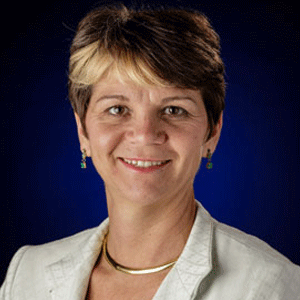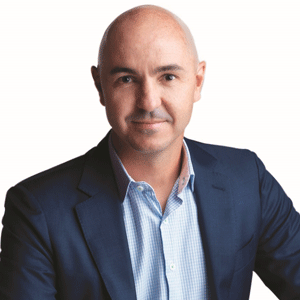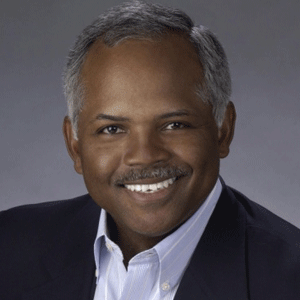THANK YOU FOR SUBSCRIBING

David W. Glenn, Partner & CIO, CIO Consulting Services, Tatum US
New technology is arriving at a dizzying rate and cannot be ignored, but knowing when to introduce a new technology is no small feat. Presenting it too early without an appropriate strategy or too late with or without a strategy could cost you your job. But how does IS management know when a new technology should be introduced?
To answer this question, it is important to understand the role of new technology in the competitive success of your business. Is technology the key to differentiating your company from your competitors? Is your organization known for technological innovation? If you answered yes to these questions, your company may be or may want to be a technology leader. An advantageous position requires the relentless delivery of new technology enhancements as quickly as the underlying infrastructure can support them.
Follow the Leader
For some companies, the business strategy may be to introduce a new technology shortly after the industry leaders do. For these companies, which might be called technology followers, the objective is to mitigate the risk and cost of being the first to introduce a new technology while capturing, or at least not losing, a share of profits generated by it. In essence, the aggressive follower balances the costs of being too soon (introducing unproven technology that could be a potential dead end; proceeding without the necessary implementation expertise.) against those incurred by being too late.
Companies in industries where technology is not important in distinguishing one competitor from another can afford to be late adopters. Oftentimes, the product itself may not be differentiated easily from others. Under those circumstances, technology’s principal objective may be seen only as a way to reduce costs.
However, today there are fewer industries and companies where technology is not a differentiator. In those few cases where it is not, the perception may be the result of a lack of creativity on the part of business leaders.
Variety Prevails
In a large organization with many products and services, a variety of technology strategies may prevail. For example, some groups may be leaders, others followers and still others late adopters at different points in time. For any organization, however, whether large with a variety of technology strategies or small with a single strategy, a continual evaluation of each strategy must occur.
Conquer the Curve
Unless IS management understands and recognizes where his or her organization resides on the technology adoption curve and acts accordingly, a technology-follower strategy easily could become one of a laggard, especially if IS management tries to minimize their own individual risks by avoiding the tough adoption decisions. When this happens, a company whose client services are based on being a leader or aggressive follower may see its market share or profits slip away. Customers, both internal and external who have come to expect the best services or continuous stream of new services through technology, may see this change and start to look elsewhere as your company slips from leader to follower to laggard.
Creative management can turn a technology follower into a leader; and, while the risks of sliding down the scale are great, opportunity may be had in moving up.
Growing Pains
Besides knowing where your company fits on the technology adoption curve, IT managers need to master the skills for properly timing technology adoption. When first introduced, a new technology can be viewed as being on the bleeding or leading edge. If adopted at this time, questions will arise: "Will it work as planned? Are schedules and budgets accurate? Will this project be a shortcut to disaster?" This leads to the question; "Why would a company want to be a technology leader and expose itself to leading-edge technologies and the risks and costs associated with them?" The answer is simple: "In an industry where technology differentiates (or where customers can be convinced it differentiates), the lion's share of the growth and profits of innovation go to the leader.
Useful techniques to mitigate but not eliminate the risk of early adoption include: prototypes, contingency plans, extreme testing, and vendor partnerships. Partnerships spread the risk and accountability between customer and vendor. This can make way for customization, modification and training; elements that could mean the difference between success and failure. The further out you are on the leading edge, the sharper these skills must be and the more important it becomes to have strong management buy-in. Technology leaders must master managing this part of the maturity curve if they are to succeed.
As a technology matures, it moves into the leading or mainstream phase, which is characterized by widespread adoption and moderate risks. At this stage, firms have higher success rates hiring IT staff familiar with the technology rather than training people from scratch. The aggressive follower signs on quickly so as not to be left behind. If their timing is right (i.e., the risks are moderate, the technology’s direction is clear, and few organizations have yet to implement), aggressive followers can reap significant benefits.
“Seizing the perfect moment to present a new technology to your organization can make or break a strategic plan”
Successful technologies eventually slip into the mainstream or legacy phase. Virtualization might be one such example. In this phase, the technology’s business benefits are clear from the examples of the leaders and followers who have adopted it. In companies for which technology has little strategic significance, the clear benefits and minimal risks make the timing right for adoption. They would not need to pursue vendor partnerships or extreme testing; it could spend its time negotiating a good price.
Wherever you are on the adoption curve and whatever strategies you use to maintain your position, you must master those strategies to be successful. Technology leaders must learn to continue to master those to successfully implement leading-edge technologies. If you don’t, your success as a leader will be short-lived. Until you have both the business strategy and the appropriate expertise, you are not ready to introduce a new technology.
Weekly Brief
I agree We use cookies on this website to enhance your user experience. By clicking any link on this page you are giving your consent for us to set cookies. More info
Read Also
Artificial Intelligence - Myths And Truths
Sustainable Future through Innovative Technology Solutions
The Future Relies on Augmented AI
Digitalization with the use of digital technologies/Improving business through digital technologies
How Marco's Pizza Leaned On Technology To Succeed Amid The Pandemic By Quickly Pivoting To Contact-Free Delivery And Curbside Carryout
Bunnings Diy Digital Transformation
For a Smarter City: Trust the Data, Ignore the Hype
Smart Community Innovation for the Post Pandemic





















